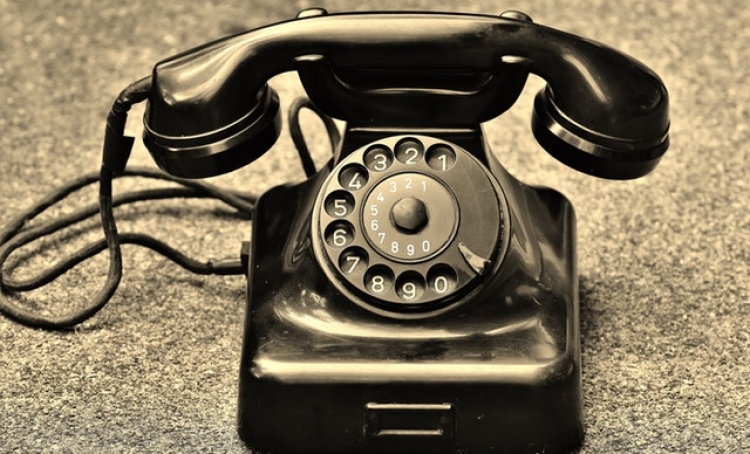Race powerfully shapes the American experience. Race will shape our lives and our sense of self whether or not we have the expertise to recognize and to question its influence. I'm a cultural historian: I study pressures like that.
As a cultural historian, I don't particularly care who was president, or what wars he started. I'm curious about how—and why—people make the difficult moral choices we all have to make in life. These are the choices that define our lives. These are the choices that both shape and reveal our identity. But in making these decisions, we have to cope with cultural pressure from the world around us. I study what those pressures are, where they came from, and how they have changed over time.
At the moment, many white Americans are feeling baffled. At some level we cannot fathom how this nation could have reached the point where an officer of the law could so casually and deliberately suffocate a man over eight minutes, in the presence of witnesses, on a sunny street in a state famous for its local culture of "nice." I'm here today at Women's Exchange to explain how this is possible—to offer, if you will, the kind of background briefing that elected officials get all the time to help them make informed decisions. I'm here today to help you make more informed decisions on where you stand, and where you might want to stand, on the great issues that are now roiling this nation yet again.
The cultural history of racism in America goes far beyond the facts of slavery. Today I want to explain how that came to be the case. And here's the major claim I'll be making: belief in the inferiority of black people gets built into Western culture by appropriating wholesale existing beliefs about the inferiority of women.
Here's how that happened. Columbus sails the oceans blue in fourteen hundred and ninety-two. Right? We all learned that ditty. 1492 is the last gasp of the high Middle Ages. It's the beginning of what comes to be called "The Age of Discovery" or the "Age of Exploration." Over the next century, famous men sail all around the world staking the claims that will become the European colonial empires. Hernando Cortez, Francisco Pizarro, Vasco da Gama. Henry Hudson, Sir Francis Drake, Sir Walter Raleigh.
Meanwhile, what was going on back home? Europe was nearly committing suicide, which Europe does from time to time. From 1520 to 1660, Europe was consumed by what came to be called the Wars of Religion.
By 1660, major cities all over Europe lay in ruins. In central Europe, a third of population had died. In one thirty-year span toward the end of these wars, a higher percentage of Europeans would die than later died in World War I and World War II put together. More than twice as many, in fact.
From the ruins, two things changed. First, politics changed: medieval monarchies began to give way to what would become the democratic self-governing nation-state. Second, the economy changed. Agricultural feudalism gave way to urban, mercantile capitalism. Both changes matter, because that combination leads directly to what came to be called "scientific racism."
Here's how that happens. Racism gets built into the new economy of the West because European capitalism becomes structurally dependent upon colonialism. The domestic European economy was in shambles, but there was serious money to be made mining silver in Peru, or stealing gold from the Mexicans, or kidnapping Africans to sell as slaves. Colonialism made Europe fabulously rich and thus fabulously powerful. And it all derived from exploiting other people globally and from expropriating the natural resources of their land.
The African slave trade was the epitome of that exploitation. And enslaved Africans were also crucial to the most spectacularly profitable businesses—the international trade in sugar, cotton, and to a lesser extent tobacco. It's a story of brutal and unrelenting carnage. So if you haven't learned anything much about slavery as an institution since high school, and especially if you were told that slaves were not really treated all that badly, you need to catch up. A good place to start is the book Inhuman Bondage: The Rise and Fall of Slavery in the New World by David Brion Davis. Or Ira Berlin, The Making of African America: Four Great Migrations.
As the colonial empires grew, reports of violence against people of color filtered back to Europe. Such violence contradicted the great—and growing—Western cultural allegiance to human rights and moral equality among all people. Abolitionism really gets going in the late 1700s, right alongside the American Revolution in 1776 and the French Revolution, 1789. Controversy builds in the 19th century: there were violently suppressed pro-democracy movements all over Europe in 1848, and then the American Civil War, 1861-1865. People in the West—at least some people—are up in arms demanding human rights.
After the American Civil War, there's a major authoritarian backlash against all this pro-democracy human-rights nonsense. Beginning in the 1870s or so, there is a major re-assertion of absolute authority and social hierarchy in a variety of cultural domains. In politics, the backlash creates the cultural and conceptual foundations of twentieth century totalitarianism. By the 1920s and 1930s, for instance, many people are actively questioning whether democracy is politically viable in the first place. Hitler and Stalin are in the history's green room, waiting for their moments on stage. In religion, and as I explain in my book about religious absolutism, papal infallibility and biblical inerrancy emerge side by side—two remarkable teachings that flatly contradicted two thousand years of prior Christian tradition. Another major aspect of the backlash is what comes to be called "scientific racism."
Scientific racism was an influential intellectual movement spanning the period roughly from 1860 to 1960. From all of that history, I want to highlight four men you need to know about. And here's my major claim about these four men: together they fund the circular logic of racism. That is, the poverty of black people proves their inferiority, and their inferiority justifies their ongoing economic exploitation and political exclusion by white people. Racism involves a catch-22 of epic proportions.
Scientific Racism: Four Famous Men
The first two men on my list are Edward Tylor, the "father" of anthropology, and James Frazer, the "father" of sociology. Each of them assembled supposedly "scientific evidence" that non-European cultures are across-the-board inferior to European culture. That superiority justifies European colonial domination of other people all around the globe.
Today we'd call such claims pseudo-science. But it wasn't pseudo-science at the time. Not at all. It was authoritative science. It was science-science. Given their academic positions and influence, Tylor and Fraser saw to it that for most of the next century, social scientists both taught and believed that white supremacy is a self-evident scientific fact just as the inferiority of women is a self-evident, scientifically valid fact.
Let me repeat what I just said. If you remember nothing else that I say today, remember this: racism derives from sexism. Sexism is the use of power in ways that selectively disadvantage women. Yes? We all know that. In the West, sexism goes all the way back to the oldest written texts that we have. At Women's Exchange, we have read about this heritage and talked about it for decades. We read Gerda Lerner, and when she published her autobiography at least thirty of us trooped down into Andersonville, crowding into a little feminist bookstore on Clark Street to hear her speak.
Well, ladies, racism is just like sexism. It's any use of power in ways that cause disproportional harm to people who have darker skin than northern Europeans do. But by comparison with sexism, scientific racism was remarkably new. Prior to Tylor and Frazer, "race" had been a very amorphous, poorly defined concept. Europeans exploited Africans and indigenous Americans and people in India and elsewhere because Europeans had the military and technological superiority to do so. That's all there was to it. They could get away with it. So they did.
But scientific racism succeeded as an idea, scientific racism had immediate cultural credibility, because racism borrowed wholesale from pre-existing, unquestionable Western assertions about the inferiority of women. Black people are just like women—but worse, because some black people are men. And that means black men are really dangerous. I think white fear of "black violence," especially black male violence, is classic psychological projection. Its foundation, I suspect, is white fear of black male rage over the reality that white men were raping black women all the time. Take a look, if you will, at an editorial in today's New York Times by the poet Caroline Randall Williams, "You Want a Confederate Monument? My Body Is a Confederate Monument."
Scientific racism emerges right alongside what we might call "scientific sexism." Scientific sexism was a reactionary response to demands by women for civil rights equal to those of men. Those demands were part of the whole pro-democracy movement that triggered revolutions in France in in America. Consider these dates: Mary Wollstonecraft's A Vindication of the Rights of Woman was published in 1792. Cady Stanton meets Lucretia Mott in 1840, and Susan B. Anthony in 1851. Demands for the proper education of women were growing all through the nineteenth century. And so, scientific racism involved warnings that if you educate a young woman she will stop ovulating. And become a lesbian! Or that women who rebelled against the place of women in society had overtaxed our delicate brains by reading too many books and by trading letters with too many other women and so we needed to be locked in our rooms without books or pen and paper. Or institutionalized and heavily sedated. The only women who were biologically "natural" or "normal" were deferent, submissive, obedient women. Uppity women were biologically defective. We were perverse. And we were a threat to "family values" and to the entire social order.
For years now, I've taken all that history into account in writing about various aspects of Western cultural history. When the #metoo movement broke into national consciousness around Christine Blasey Ford's accusations, I dug out my old notes and wrote up a couple of blog entries repeating my basic analysis about the role of sexism in what has been called "the spiritual grammar of the West." Those blog posts are still up on my website if you want the whole story as I see it. For now, let's just focus on one simple, familiar list: the moral failures traditionally attributed to women.
Take a look. Women are by nature profoundly and inescapably characterized by this list of moral failings:
Inconsistent
Irrational
Undependable
Lazy
Self-indulgent, undisciplined
Unreliable
Deceptive, deceitful, dishonest, devious
Dumb
Every woman here recognizes these accusations. These failings have always justified the social, political, and economic oppression of women.
I want to make a painfully obvious point: we bristle when men make demeaning accusations like these about women. And that it happens all the time. It's the rare man who really gets what's going on—the rare man who feels any personal responsibility for changing the status quo. We sigh wearily or roll our eyes when a man assures us that he respects women and he is not a sexist and so none of this is his problem. And because he doesn't have a sexist bone in his body, he has no obligation to do anything. Yeah, right.
We also understand that even good men, men we love and trust, commonly fail to recognize the automatic advantage they have over women, the built-in advantage they have, whenever they walk into an interview, or get up to speak in a meeting, or argue with somebody in authority. We know, we have seen, that our husbands and brothers and sons have worked very hard for everything they have achieved. But we also know, and we have also seen, that a woman with the same talents and the same work-ethic has been far less likely to get as far unless she is very very lucky. And unless she has powerful men as her mentors. We all know that one of the first questions we ask ourselves in meeting some new man is "which side is he on? Does he take me seriously? Can this guy be trusted?"
But white feminists have a very bad track record of believing black people when they say me too. Us too. For hundreds and hundreds of years, us too. White feminists need to recognize that racism is just sexism on steroids. Racism is sexism expanded into a murderous, genocidal, globe-spanning set of toxic lies. It is a moral pandemic that has infected all of us. And there is no safe social distance.
The only available treatment are these difficult, complicated conversations. The only antidote is a painful, ongoing resolve: we will recognize the toxins we have internalized whenever they show up in our head. And we will stop and think.
And if that's disconcerting, consider this: we all been told too many times that women are at fault for the fact that women are paid less than men doing equivalent work. Women are at fault for the lack of women in leadership positions. Or as I was told repeatedly, because I asked repeatedly, literature courses almost never teach women writers because women have not written anything worth reading.
Ladies, we recognize that nonsense for what it is. We need to recognize the exact same nonsense when it's laid out against people of color.
So that's Tylor and Frazer. My third big man here is Herbert Spencer. He was a popular writer who tried to synthesize a lot of what was going on in the last third of the 19th century. He was not a particularly original thinker, but he was phenomenally influential nonetheless. For instance, Spencer coined the phrase "survival of the fittest," not Darwin. It was he, not Darwin, who argued that evolution moves from simple to complex life-forms—such that people of European heritage, for instance, could claim to be more highly "evolved" than the "primitive" peoples from Africa or the Americas.
Spencer's misappropriation of Darwinian evolution gives rise to both social darwinism and eugenics. Which is to say, we have no obligation whatsoever to the common good. We have no obligation whatsoever to the poor or to the vulnerable among us. In fact, worrying about social justice is simply perverse. It's stealing from the makers to provide handouts to the worthless takers. Such nonsense, they say, stands in the way of Western cultural, economic, and moral progress. Nietzsche said it well: "The weak and the poor shall perish: the first principle of our philanthropy. And they shall be given every assistance." The Nazis would later turn Spenser's claims into government policy.
There's a fourth white guy you need to know, man you have probably have never heard: Madison Grant. You have probably never heard of him because after World War II there was a concerted effort to erase historical evidence of his influence. But there's a fabulous new biography by Jonathan Spiro: Defending the Master Race. Put it on your must-read list.
Madison Grant was born in 1865, the year the Civil War ended. He was a eugenicist in the tradition of Spenser's social darwinism. He was an anthropologist in the tradition of Edward Tylor. Above all, he was an extraordinary organizer and activist who was horrified by late-Victorian the waves of immigration into the US from southern and eastern Europe.
As Madison Grant saw it, the Irish were not white. Neither were the Italians or the Greeks, nor the Poles or the Lithuanians. And the Jews? Grant had a particular horror of Jews, especially Polish Jews. For Grant, "white" meant what we came to call WASP: white Anglo-Saxon Protestant. The German word was Aryan. In American segregation laws and racist policies, the preferred term was "Caucasian."
In 1916, Madison Grant published what would prove to be a remarkably influential book, The Passing of the Great Race, lamenting the terrible threats that white people faced from the rapidly expanding brood of inferior races. Hitler called Grant's book "my Bible." After reading Grant, Hitler sent men to the United States to study Jim Crow laws as a model for how white supremacy ought to be organized. In the 1930s, there were numerous exchanges between Grant's people and Hitler's.
From roughly 1890 to his death in 1937, Grant worked tirelessly to ensure that both power and property remained an exclusively "white" privilege. He was something like the Koch brothers—his interlocked organizations and his fundraising prowess was everywhere, and yet he managed to deflect a lot of attention away from himself personally. And like the Koch brothers, he was incredibly successful. His influence stands behind Jim Crow laws, the Klu Klux Klan, and monuments to Confederate heroes all across this country. He enjoyed lively, visible support from major national political leaders and from the social elite generally. Madison Grant made white supremacy socially respectable—and not just "respectable." He made white supremacy look morally responsible, culturally necessary, and scientifically valid.
I can't emphasize that enough. White supremacy is not just a belief system found among disaffected young men lurking in the darkest corners of the internet. Nor is it found only in rural red-state America. White supremacy is a respectably mainstream American concept, and it has been a respectably mainstream America concept for generations. That's why it is built in to so many of our cultural commonplaces and major institutions at such a profound level. As proper urban liberals in Chicago, we may not believe that. We may not want to believe that.
But the evidence is plain: the heritage of white supremacy permeates the American legal system, which includes law enforcement. The comfortable white illusion is that legislation in the 60s put an end to all such legal discrimination against black people. Some discrimination ended, yes. But much of it persisted. And over time, new legal strategies were devised that inflicted disproportionate harm on black communities.
Much has been written about this of late. Legal issues are, of course, notoriously complex—and I don't have the legal training to grapple in any detail with what has happened legally and what continues to happen legally. All I can say is this: from what I have read, and from the conversations with relevant experts that I've had, the law continues to be used against black people in sweeping and fundamental ways. I have been stunned to learn all this, so I realize you may have trouble believing me here. Please believe me. If you are not an attorney working on civil rights issues, or if you are not reading the books these attorneys say we should read, you may not have a clue. I sure didn't. But I'm learning.
From what I've read so far, I've picked out four little sets of facts that made me stop, reach for a bookmark, and go fix myself a cup of tea. Some things are just mind-boggling. I've been boggled. I have been severely boggled.
Racial Law in America
Point #1. Prior to the Civil War, opposing slavery did not mean advocating for the social and political equality of black people. Many abolitionists imagined that black people would remain segregated in a permanent second-class status, sort of like an American version of South African apartheid. Even in the North, for instance, it was commonly illegal to sell property to a black person. Successful black businesses were regularly burned down by white mobs. Law enforcement stood back, silent, just as law enforcement stood back, silent, during lynchings.
Point #2. I knew in superficial ways that what the North called "Reconstruction" collapsed very quickly after the Civil War. I was amazed to learn how swiftly something very close to slavery was re-imposed upon the black community. The markets for buying and selling black people were shut down, but the abuse and exploitation of black people continued because there was no legal way to stop it. The only way the North could have protected black people and established their civil rights would have been by stationing troops and occupying the South for generations. And the North had no stomach for occupying the South.
And so black schools were repeatedly burned down. Black people teaching the skilled trades to other black people were apt to be lynched. Black businesses were repeatedly torched. Let me repeat: there were no legal protections for black people, because law enforcement and government authority remained in white hands. And the white community, which was of course outnumbered by former slaves, was determined to keep the black community subjugated.
When black people fled to the North, as of course they did, they found no legal protections here either. Even in the North, black people were not equal in the eyes of the law. Even in the North, the law enshrined white supremacy because scientific racism was unquestioned until after the Holocaust demonstrated where such thinking leads. And by that point, after almost a century of such nonsense and the slick maneuverings of Madison Grant and his pals, popular culture simply assumed that scientific racism is true. That white supremacy and black inferiority are simply facts of life, and those dangerous liberals arguing otherwise have to be stopped before they destroy the nation.
I found an excellent, very readable, very richly documented history of "race" as a weird and dangerous idea woven deeply into American history: Jacqueline Jones, A Dreadful Deceit: The Myth of Race from the Colonial Era to Obama's America. She's a MacArthur genius and the winner of the Bancroft prize in America history. Read her. Jones sets into a larger context the story told by Isabel Wilkerson in her classic book The Warmth of Other Suns.
Point #3: the New Deal and other progressive legislation of the 1930s and 1940s. The New Deal included all kinds of labor reforms: minimum wages, the 40-hour work-week, working conditions, workplace safety, the right to unionize, and so forth. The New Deal also provided training programs to equip workers with relevant job skills.
This progressive legislation would never have passed without the support of white Southern Democrats. They supported these bills because they were happy to impose costly new regulations upon Northern industry. The South was a low-wage low-skill agrarian region, and they still hated the North. But these Southern senators made sure that the whole array of New Deal programs and protections excluded black people.
Later, these same senators excluded black people from the GI Bill—because, they said, black people would not benefit from education. Later still, to remedy the acute housing shortage after World War II, the government set up mortgage markets and mechanisms to make home ownership more widely available. The Federal Housing Authority was one of many different agencies. But Southern senators made sure that black people would be excluded from the mortgage market. They even made sure that black people would not be able to rent apartments in newly constructed buildings.
Not only were black individuals excluded. Integrated neighborhoods were also excluded from the mortgage market. That's why property values fell if a black family moved in: anyone else trying to sell a house was hampered by the fact that now potential buyers could not get a mortgage. These new federal policies also required real estate developers to impose whites-only restrictions on whatever they built in order to qualify for development loans.
In this way, federal policy quite successfully imposed patterns of Southern racial segregation upon the entire nation. These residential patterns continued even after successful legal challenges emerged over time, because white American culture as a whole had been taught to feel that there's something wrong with having a black family living on your block. Racism had indeed become both morally appropriate and socially respectable on a national scale.
Here's a story you might remember. A few years ago, maybe in the late 1980s or early 90s, the new Wilmette village automobile sticker showed a cartoon image of children of four different colors all holding hands. There was an uproar. At least some of good citizens of Wilmette were hysterical at the suggestion that people of color might live in Wilmette. Madison Grant would have been proud of them: segregationist have always been terrified of letting white children socialize with "their inferiors." Do you remember that song from South Pacific? "You have to be taught to hate."
For more on how systemic racial segregation was imposed through the legal system, read The Color of Law by Richard Rothstein. I got about a third of the way into The Color of Law and I had to stop for a few months because the story he tells is so appalling—and so incredibly well documented. It was published in 2017, but it's on the most recent New York Times nonfiction best-seller list. I was pleased to see that.
Point #4, and one that has been much in the news lately: racist disparities in policing. That includes everything from police killing unarmed black people to the mass incarceration of black people, especially black men. The United States is on track to imprisoning one-third of black Americans. A lot has been written about this lately, and for good reason, so I'm not going to go into details here. But the book to read on this topic, the book, is Michelle Alexander, The New Jim Crow.
She begins by admitting that when she began her research she never ever would have believed what she later discovered was happening—happening legally—in the United State of America. I wouldn't have believed it either. But like Rothstein in The Color of Law, Michelle Alexander marshals evidence that is careful, thorough, and beautifully documented. She explains how political initiatives like the "war on drugs" and the "war on crime" and the whole "law and order" movement was a systematic attempt to roll back the what the Civil Rights Movement had achieved. These new law-enforcement initiatives imprisoned black men on trivial charges, often for long sentences, and often in prisons where they were paid pennies an hour working for state-licensed industries. And then, of course, the government made sure that anyone with a "criminal record" will be permanently unemployable. And by the way, did you know that on Wall Street, the value of stock in private prisons doubled in after Trump's election? Ladies, Michelle Alexander is another woman you need to read.
Books like The Color of Law and The New Jim Crow are as irrefutable as that video of a cop slowly suffocating a man to death on the streets of Minneapolis. The history of racism and white supremacy in American culture and in European culture is just as irrefutable.
Which Side Are You On?
Bottom line? The true measure of human evil is daunting. I understand—we all need to understand—our own reluctance to face the true measure of human evil. As privileged white women, of course we'd rather not think about the systemic evil of racism. Of course we don't want to read about it. We don't want to talk about it either. Neither do any of us want to read about death rates from Covid-19, much less how unspeakably awful it is to die slowly of suffocation with a tube down your throat. Or, um, a cop's knee on your neck. No, thank you, I think I'd rather knit.
We can, and we must, admit that reluctance and get over it. That's why you are here today. You are here today because you understand that people all around us are suffering from systemic racism day after day after day, and that has been the experience of their families for generations. For centuries. And now, maybe, things are beginning to change.
Things are beginning to change because a lot of white people have recognized that either we face the systemic evil of racism and we engage it and we speak up against it and we vote against it, or we else are responsible for the fact that racism continues to permeate our society.
Those are the options here. Those are the only options. As I said at the beginning, we are the stories we tell, and the stories we tell are defined by the choices we make in life. I have come to see—I have come to feel—that my own moral integrity and my own deepest identity have been called into question by what I have learned about race in Western culture. What am I doing to confront and combat the pervasive evil that is racism in America? Me, here, one small, grey-haired lady who could be a stand-in for Mrs. Santa Claus. What am I doing? Which side am I on?
Santayana said that those who refuse to study history are condemned to repeat it. That famous line has a corollary: knowing our heritage, no matter how painful that knowledge, can help us to contribute to a very different future. I hope I've helped you today to see just a bit more clearly the cultural pressures shaping your own choices and decisions on this extraordinarily difficult and complicated topic.
We can't solve a problem we don't see. We can't solve a problem we are afraid to face. Above all, we can't be the people we want to be, living the lives we want to live, if we fail to take our own moral responsibilities seriously. Which side are we on?
I want to end here by inviting you to watch a two-minute lyric video from a newly- released CD by my brother, the eminent musician and composer Michael Miles. It's called "Enough," and it's the final cut of a larger work, "Which Side Are You On." Here's the link https://www.youtube.com/watch?v=qTAU1sCbegc
(My thanks to Women's Exchange for hosting this talk on June 26, 2020.)





